Are you a mountain person or an ocean person? When it comes to debating which is the most scenic drive in Canada, the answer will largely depend on what inspires more awe in you: a highway that seems to dead-end at a snow-capped, towering mountain peak with evergreen valleys on either side; or a knife-edged cliff drive that follows an undulating coastline flanked by an endless expanse of blue ocean. I can certainly appreciate both, but after driving the Icefields Parkway in Alberta this summer, I can definitely say I’m a mountain person. I can also say quite confidently that this is one of THE most beautiful road trips you can take in Canada, if not THE most. But I’ll let you be the judge after you get a taste of what there is to see on this epic drive.
The Icefields Parkway in Alberta: Where to Start
The Icefields Parkway in Alberta (Highway 93 North on maps) starts at Lake Louise in Banff National Park, and continues north for 232 km (144 miles) to Jasper National Park. Henk and I followed it in this direction, since we were leaving Banff and heading to Jasper for a few days (continuing our 2-week Rocky Mountain adventure that had begun in Waterton.)
If you were to drive the Icefields Parkway in a straight shot, it would take you about 3 hours or so. But unless you are a truck driver on a deadline, you’ll want to allow at least double that time, because there is so much to see and so many beautiful places you’ll want to stop along the route. If you are like Henk and I, and want to see EVERYTHING, it might even take you more (it took us 9 hours!). To do it right, though, you’ll need a guide, and Henk and I found the perfect one to take along with us.
Get a Guide: a GuideAlong Audio Tour
When I was looking for information of the Icefields Parkway, I stumbled onto the perfect phone app called GuideAlong (formerly called Gypsy Guide). First off, what I loved about this audio app was that once you download it to your phone, you don’t require cell service for it to function, something that is important since service along the Parkway is either nonexistent or sketchy at best.
Secondly, because the app is now tied to the GPS chip in your phone, the audio track is always in perfect sync with your location: it knows where your phone is on the route and delivers information that corresponds perfectly to wherever you are on the Parkway. You can listen to the guide on speaker mode on your phone, or run it through your car’s audio system, and even if you disconnect your phone to go take photos, it will pick up wherever it left off.
And lastly, the Guide doesn’t just point out where to pull over or what to see: there’s also some contextual narrative that describes the landmarks along the way and tells the history of the area with stories about the first explorers who came here. It’s almost as if you were following in those early adventurers’ footsteps as you trace their path between the peaks and mountain passes.
TIP: Be sure to download your GuideAlong app and the tour you want before you head off, when you DO have access to the internet. Each tour has its own price (the Icefields Parkway Guide was $8 U.S.) but it’s yours forever with any updates, and you can even listen to the tour after your trip if you want to revisit some of the information.
First Stop Along the Icefields Parkway in Alberta: Bow Lake
Just to get you warmed up to the kind of views that lie ahead, Bow Lake is one of the first stops along the Icefields Parkway about half an hour from Lake Louise. It’s one of the largest lakes in the Park, and with the massive mountains all around it outlined sharply with the snow still in their crevices, I’d say it was a not-too-shabby start to our Parkway drive.
TIP: At every significant viewpoint or attraction along the Icefields Parkway, there are always pullouts (some large, some small) where you can park your car safely to take a photo or just take a moment to appreciate the views. Our Guide also helped us find some that may be easy to miss.
Next up: a Short but Snowy Path to Peyto Lake
Henk and I had timed our visit to the Rockies for the first two weeks in June, which happened to coincide with a really, really late spring. So when we got to the Peyto Lake stop, even though our GuideAlong tour had advised us that we would need to do a short uphill hike on a paved path to get to the viewing platform for the lake, the path was still largely covered by snow.
It was still negotiable in our running shoes and once we reached the viewpoint we were blown away by the colours of blue emerging in this glacial lake! Peyto Lake is known for its stunning setting and its colour, and even though some of the lake was still frozen, it meant we could see more variations from a deep cobalt blue under the thinning ice to brilliant turquoise on the fringes.
It’s easy to see why this lake is one of the Parkway’s most iconic and beautiful stops, and whatever colour it may be when you are there, it’s sure to be stunning. And don’t forget to ‘find the fox’ in the shape of the lake!
TIP: The turquoise colours of these mountain lakes is due to ‘glacial flour’ (essentially finely ground clay washed down with the melting snows of the mountains. At the beginning of the thaw, the particles are suspended in the deluge of meltwater so lakes may appear more milky or opaque, but later in the season the silt settles and many lakes becomes more transparent.
A Hike to the Sculpted Mistaya Canyon
There are plenty of trails along the Icefields Parkway where you can hike to incredible viewpoints, but if you don’t want to go too deep into the backcountry and still want to see a spectacular gorge, Mistaya Canyon is definitely one of these stops. The downhill trail takes you to a canyon where the roaring meltwaters carried in the Mistaya River have carved a path through the rocks, creating an organic sculpture that looks like waves of granite.
The power of that water is mesmerizing, and you can enjoy different views of it either from the flat rocks closer to the water a little upstream or from above on a footbridge constructed over the narrowest part of the sluice.
We could have stayed there for hours just watching the river, but there was much more to see ahead on our Icefields Parkway adventure.
TIP: Mistaya Canyon is an easy downhill hike, which means it’s an uphill return. But with only a 200 foot change in elevation, it’s well worth a little cardio!
Waterfalls, Waterfalls, even Waterfall Walls!
One advantage to driving the Icefields Parkway in the spring, is that the melting snow makes for some pretty impressive waterfalls along the way. For sheer scale, number and proximity to the Icefields Parkway, nothing beats the appropriately-named Weeping Wall waterfall. This sheer cliff is home to dozens of cascades streaming down its face, and because the runoff is seasonal, our spring visit caught it at its most ‘weepy’. This was one place where an unseasonably late spring worked out really well for Henk and I.
Another pretty waterfall is the one at Tangle Creek Falls, again, just off the east side of the Parkway. Like the Weeping Wall, this one looks exactly the way its name suggests: a tangle of water that bounces over several ledges before making its way under the highway and beyond.
Of course the views in the opposite direction are just as pretty with mountain peaks playing peekaboo with clouds as they appear and then disappear again behind them.
Big Bend, Big Views and the Parker Ridge Trail
One of the most beautiful parts of the Icefields Parkway is the piece where the highway snakes its way up into the high country along what is known as The Big Bend, a super-sized switchback that gives you incredible views over the valley below.
Just past this point is the trailhead for one of the most popular hikes along the Parkway as well, the Parker Ridge Trail. This trail takes you to an overlook where you can view the Saskatchewan Glacier and some of the highest peaks in the Park. Unfortunately because of its higher elevation, it was still snow-bound when we visited, so instead of hiking that trail we took in the pretty impressive scenery at the trailhead instead.
TIP: Snow sticks around here until at least July, so plan the Parker Ridge Trail for later in the summer. And if you are planning to do this hike, although it isn’t rated as difficult, it is a 5.5 km out-and-back route, so you should allow at least 3 hours to complete it.
A Glacier Within Walking Distance: the Athabasca Glacier
Where else in the world can you practically drive up to a glacier? The Icefields Parkway is about as close as it gets, as the highway runs right beside the last surviving remnants of the Columbia Icefield including its impressive Athabasca Glacier, the most-visited glacier in North America. This is the largest Icefield in the Canadian Rockies and once covered most of Western Canada’s mountains.
But before we even got to the Athabasca Glacier proper, Henk and I managed to capture a video of a what we thought was an ‘intermittent waterfall’ that appeared suddenly on the right cliff between two rugged mountain peaks. It turned out to be a dramatic icefall that we caught as it tumbled over the high ledges of the cliff face. It may look like slow motion but that’s because it was such a huge mass of ice falling so far.
A little farther along the road opened up on the left to reveal the absolutely massive Athabasca Glacier. Some of Jasper National Park’s tallest peaks cradle the Athabasca Glacier, and visitors can even take a tour that brings them right onto the ice where you get to walk around and even taste some of the glacier’s water. But even if you just admire the Glacier from the large parking lot opposite, the views are absolutely breathtaking.
TIP: You can book tours ahead of time with Columbia Icefield Adventure that also operates a cantilevered glass-floored SkyWalk experience. A combo price to do both will run you about $100 per person. Book ahead if you are travelling during the height of summer, as it gets pretty busy with tour buses coming from Banff and Jasper as well.
Sunwapta Falls
Now that you’ve seen the Athabasca Glacier, see one of the most photogenic waterfalls that it feeds: Sunwapta Falls. The Falls’ location makes it all the more spectacular, because this is where you’ll find a so-called ‘hanging valley’. This happens where a smaller, higher elevation valley (the Chaba Valley) ‘hangs’ above the lower, broader Athabasca Valley, creating a staircase effect for the water to flow over. And flow over it does, in a raging torrent that roars through a deep, narrow limestone gorge.
This was one of our favourite waterfalls along the Icefields Parkway, but we weren’t done yet.
Athabasca Falls
Athabasca Falls was the final official stop of our Icefields Parkway drive before arriving in Jasper National Park. And if we thought Sunwapta was pretty powerful, Athabasca had it beat, as we learned that this is the most powerful waterfall in Banff and Jasper National Parks. It’s also a very popular one, as it’s only a half hour or so south of Jasper, so this is where we encountered more people than at our other stops.
Even before we saw the falls, we got a sense of what all that water can do to limestone, when we descended to a viewing area through a sculpted canyon that was carved ages ago when the water ran through it.
There are multiple viewpoints including a bridge, and Henk and I explored all of them, because each one gave us a completely different view of the carved potholes, ledges and canyon walls.
The Icefields Parkway in Alberta: The Scenic Drive of a Lifetime
When I said that I think the Icefields Parkway in Alberta is the most beautiful drive in Canada I may be biased, but I’m not alone. Whether you measure it by photos-per-mile using Instagram data, or traditional guide book rankings, the Icefields Parkway is always in Canada’s top 10 scenic drives. And if you’re a mountain lover like I am, well, I have permission to move it even higher up that list.
Regardless, if you have the opportunity, drive the Icefields Parkway. If you don’t have the opportunity, make one. Because this truly is a drive of a lifetime.
PRACTICAL TIPS FOR DRIVING THE ICEFIELDS PARKWAY
Get a Discovery Pass: The Icefields Parkway travels through two National Parks, Banff and Jasper, so all visitors need a Park pass to drive it. You can pay for the daily entrance fees individually, but a better value if you are going to stay multiple days or visit multiple parks is the annual Discovery Pass, which allows unlimited entry to 80 destinations including all of Canada’s National Parks and many National Historic Sites.
How to Avoid the Crowds: Both Banff and Jasper get extremely busy in July and August, and many of those visitors also head to the Icefields Parkway. If you can, try to visit in June or September instead. If you can only go during the peak tourist season, hit the road early to avoid some of the crowds.
Pack a Lunch. Or two. There aren’t many restaurants along the Icefields Parkway so a better idea is to pack along a lunch, snacks and water, (especially if you are planning on doing any hiking). There are plenty of photogenic places for a picnic. Just be sure to pack out your garbage and dispose of it in one of the Park’s bear-proof bins.
Bathrooms: Most pullouts, at least the larger ones, have outhouse facilities for men and women. But the only place with running water is the Columbia Icefields Adventure Centre. My advice: see a toilet, take advantage!
Gasoline: Fill up before you start your journey, because the only place to get gas once you’re on the Icefields Parkway is at the Crossing Resort about 1.5 hours north of Banff.
Winter Driving? The Icefields Parkway does stay open all winter and it might be nice to see some of those falls when they are frozen. But note: this is NOT a major through highway like the Trans Canada (Hwy 1) and is not maintained the same way. My reco: do your drive in the warmer months and avoid any potential white-knuckle stress.
Glacier Tours: If you are planning to book a tour out onto the Athabasca Glacier through the Columbia Icefields Adventure Centre, plan ahead. You can book tickets way, way in advance on their website and you’ll avoid being disappointed if you try to do a ‘walk-in’ and there are no spots available.

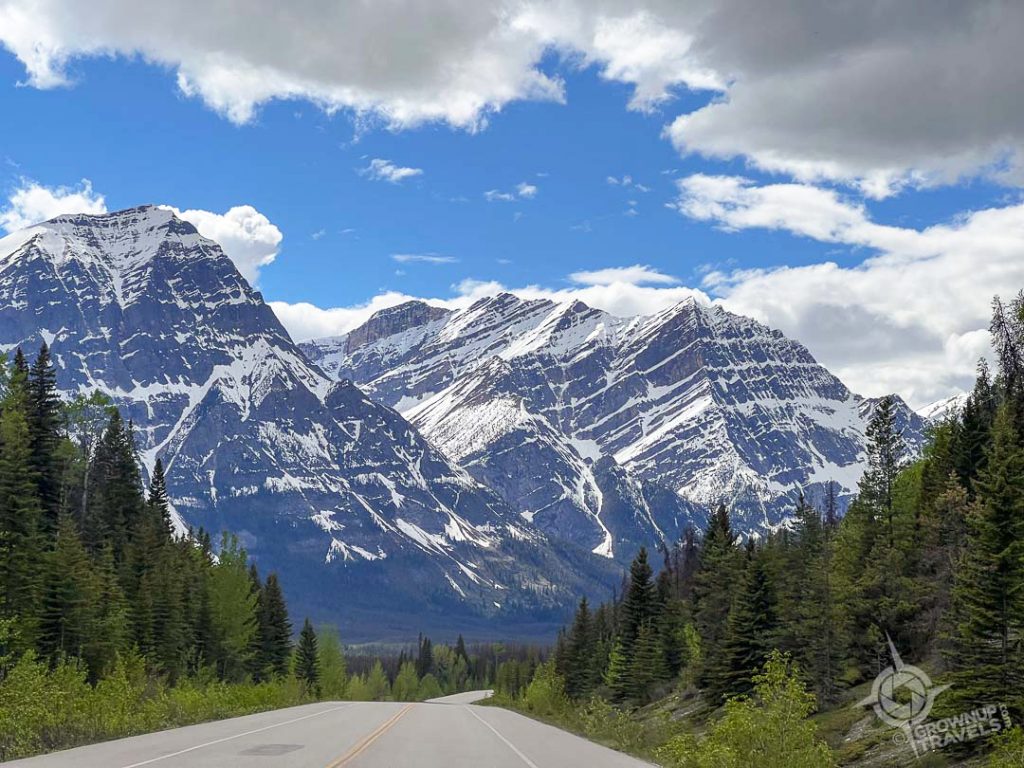
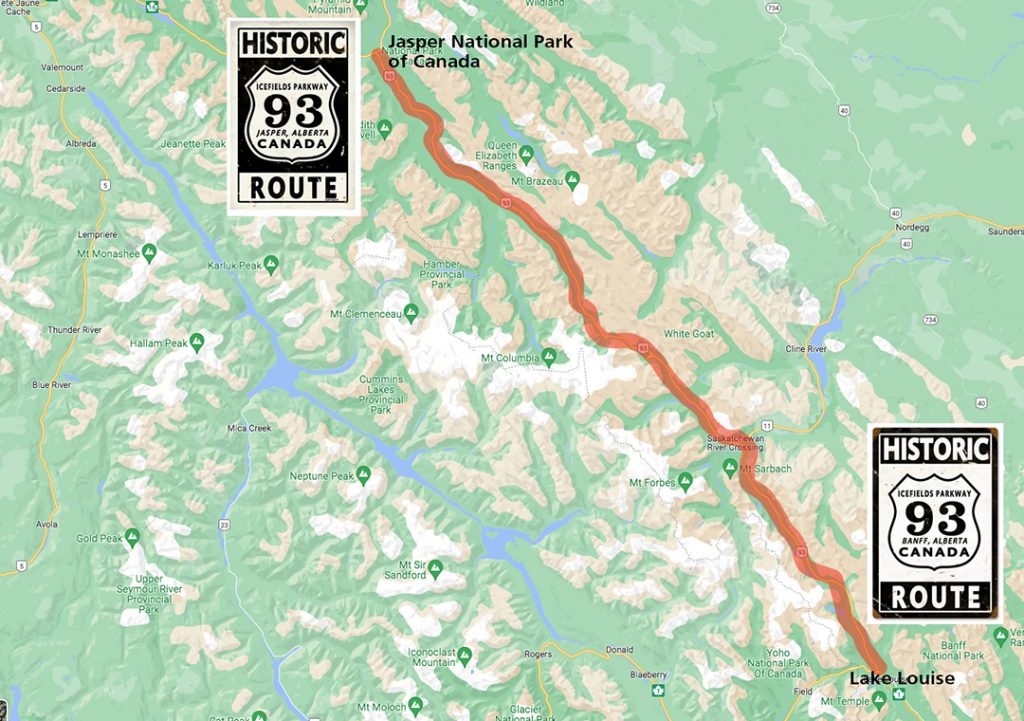
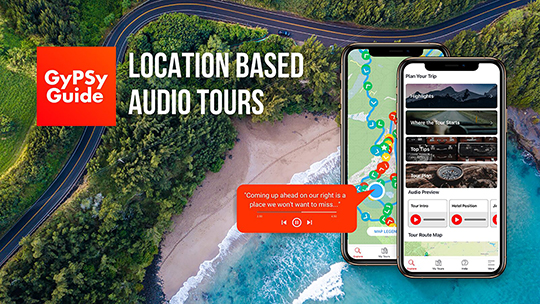
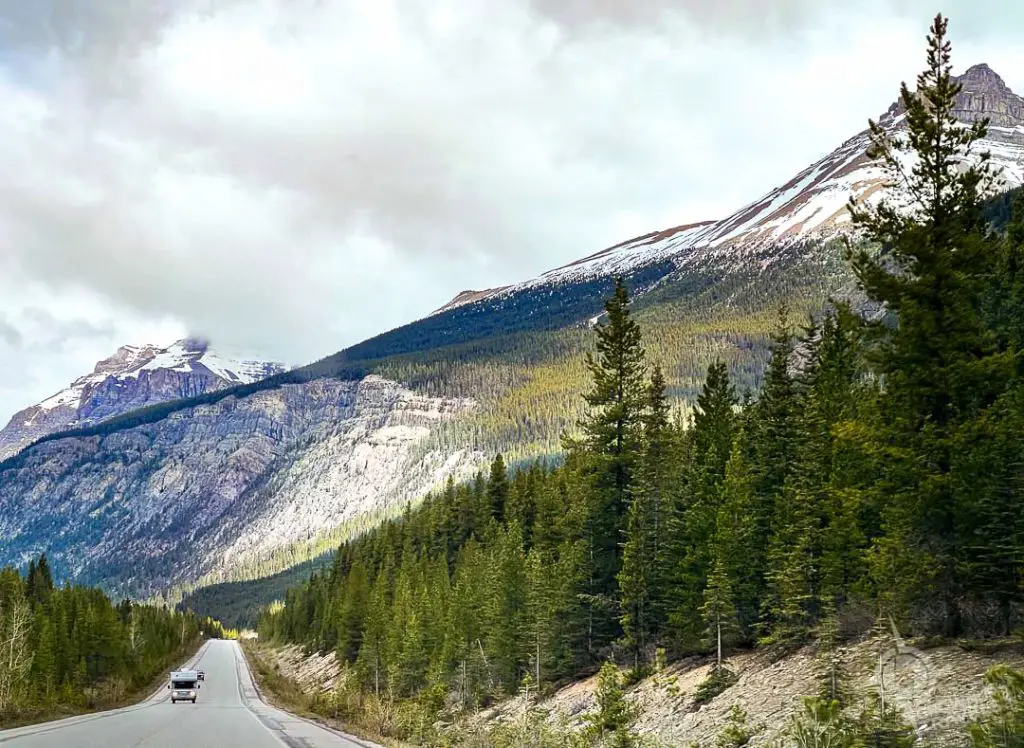
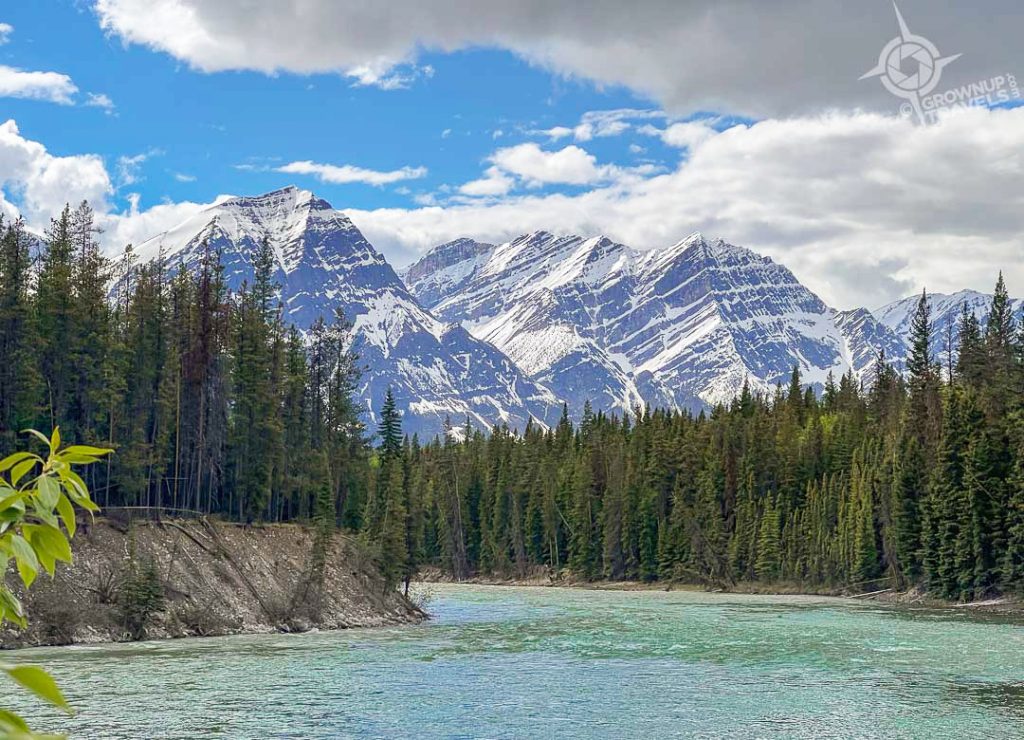
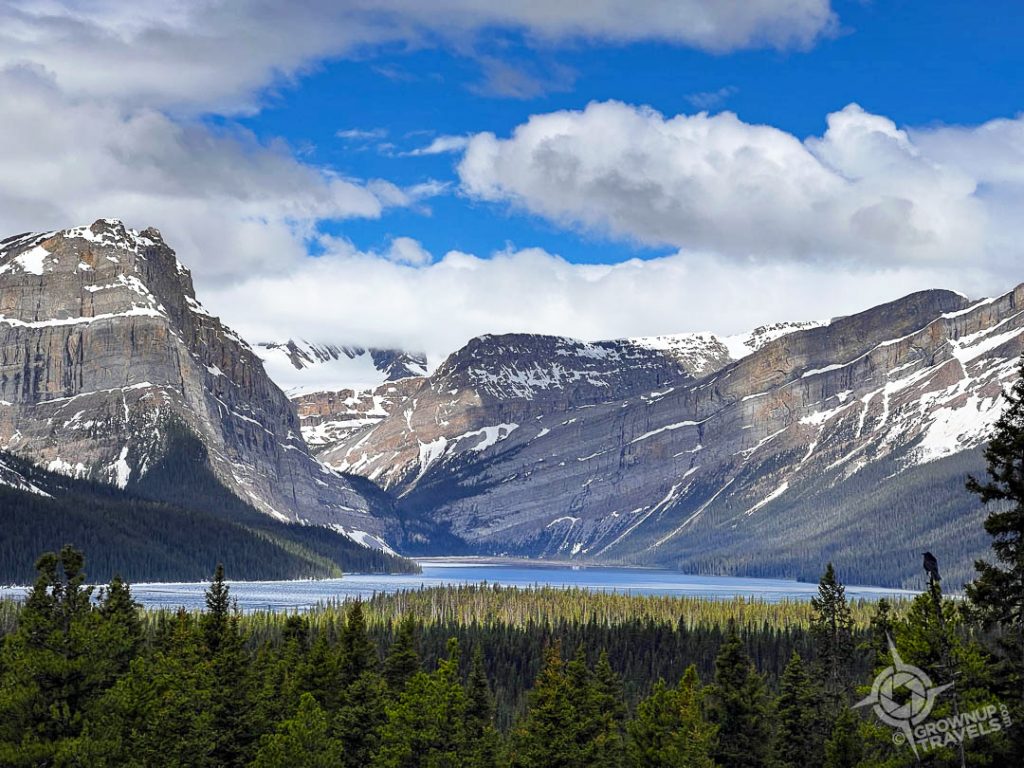
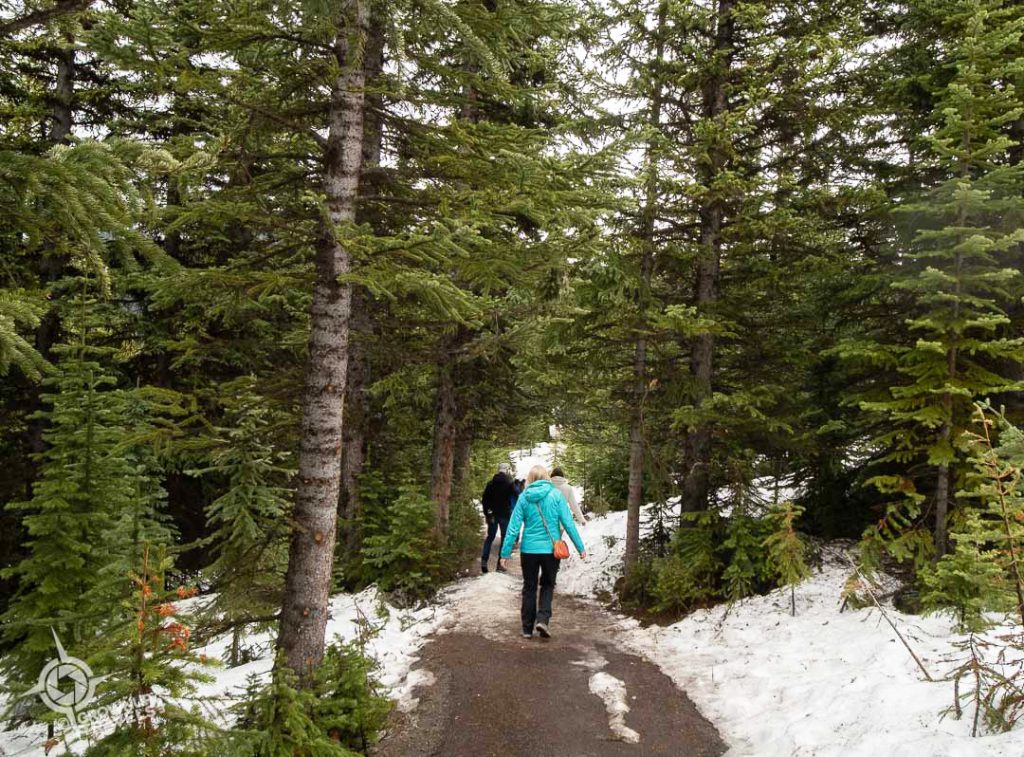
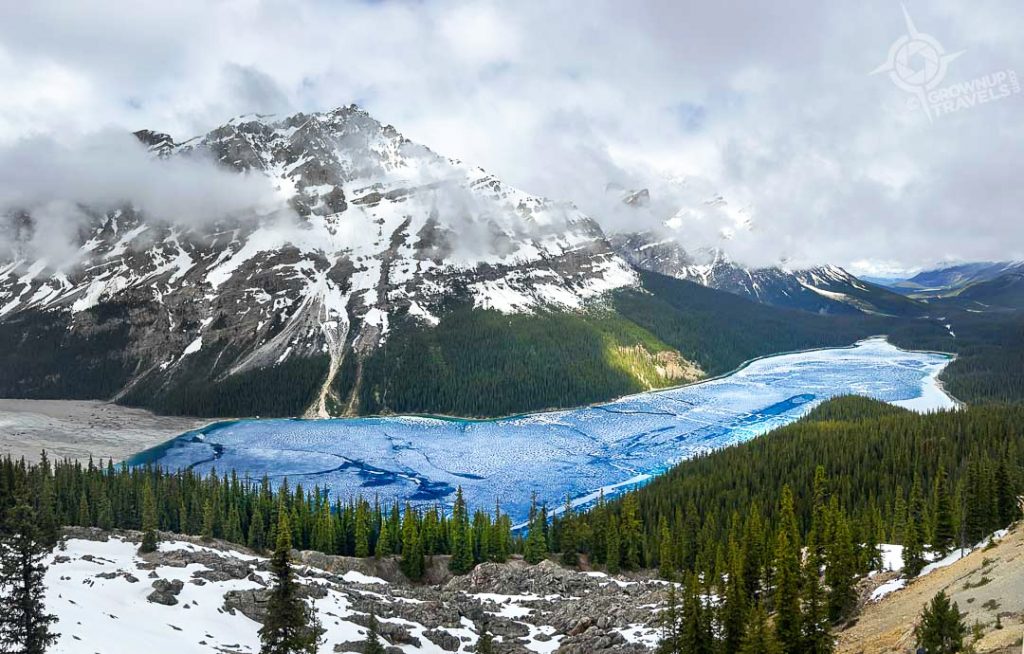
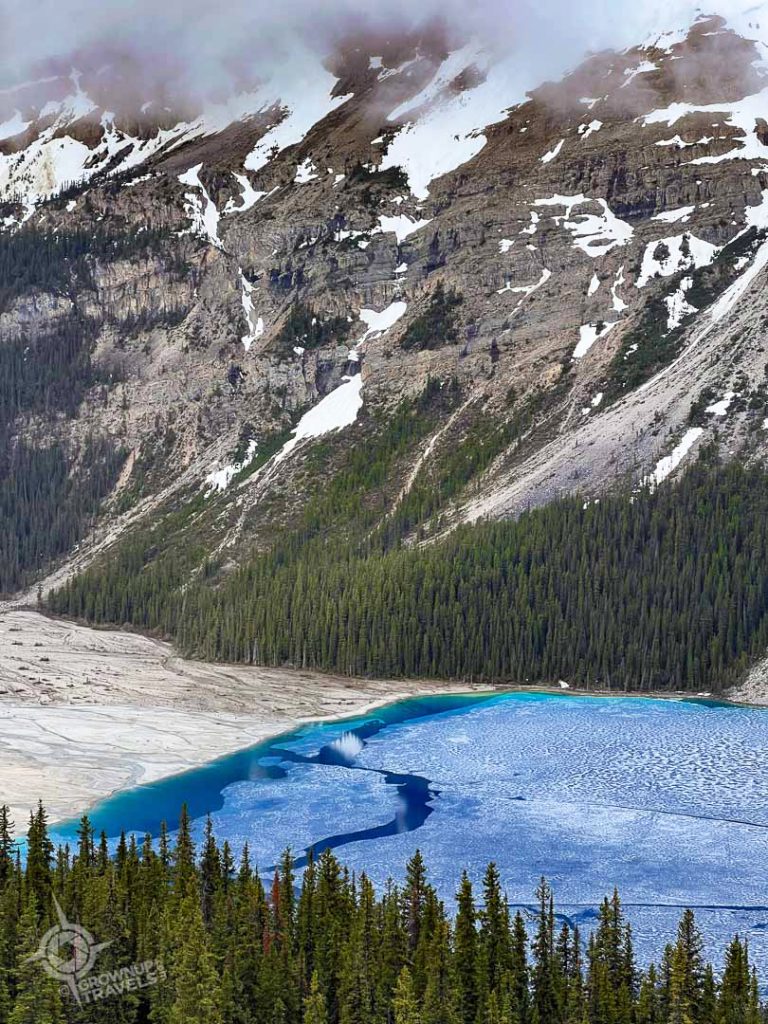
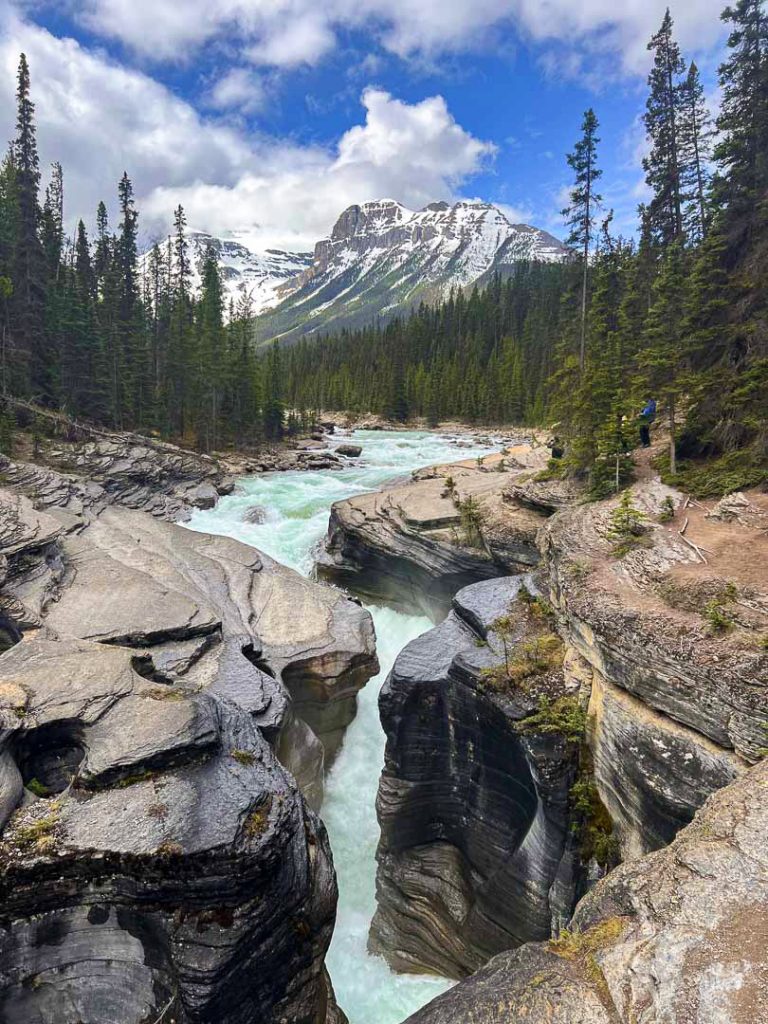
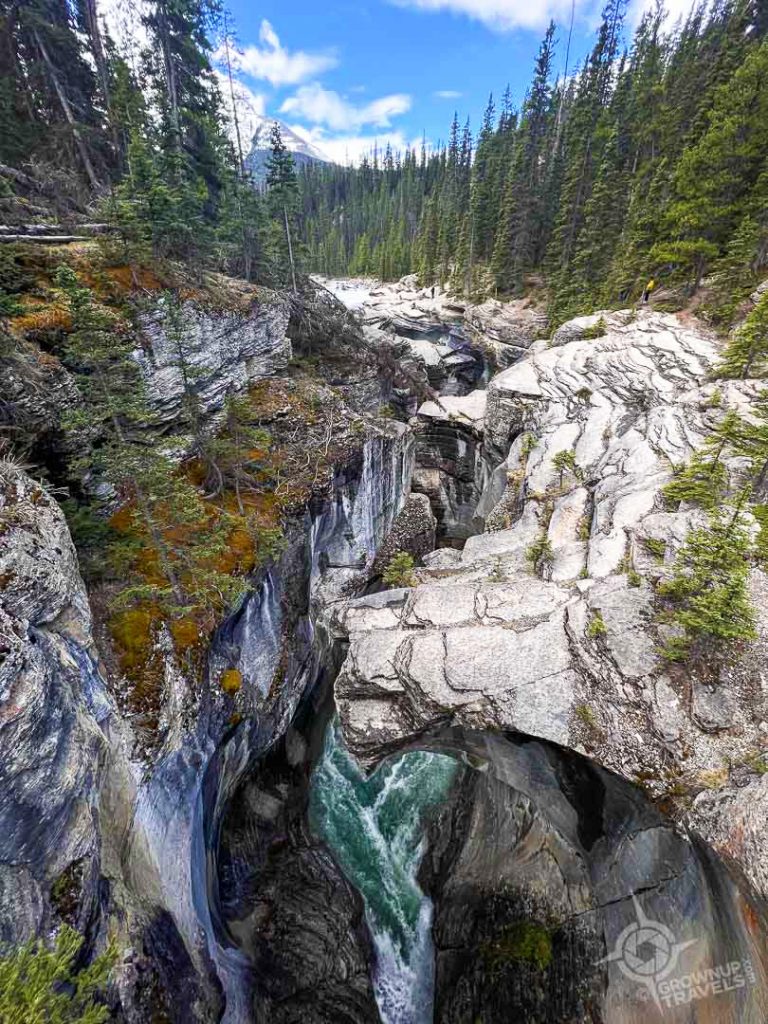
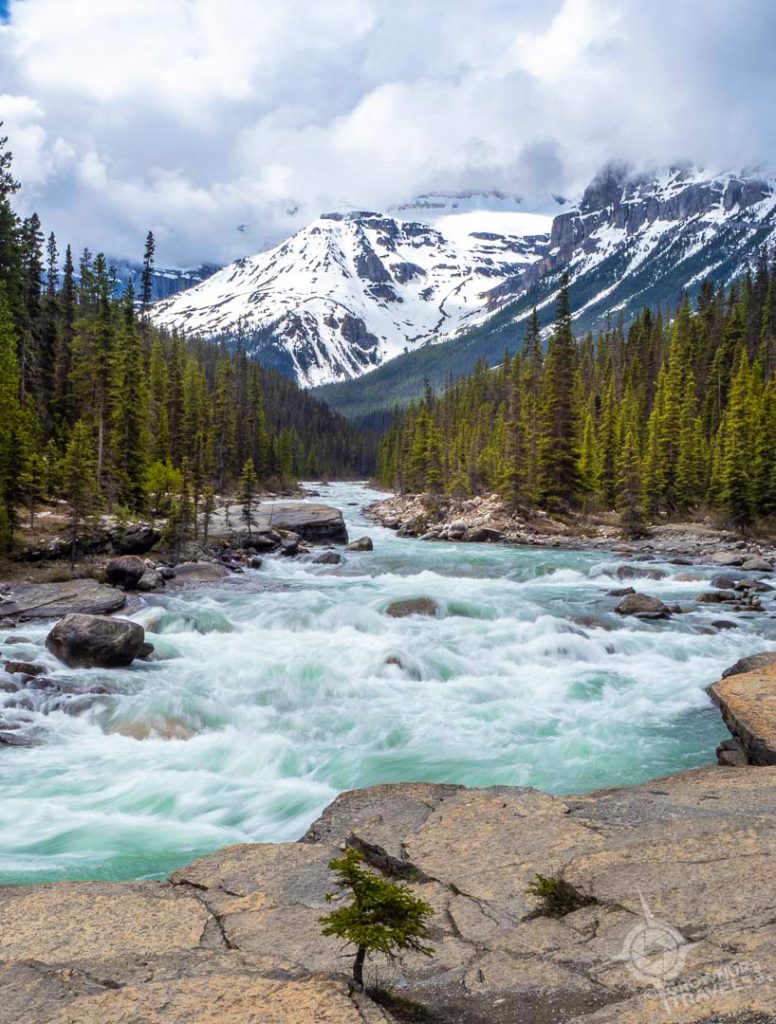
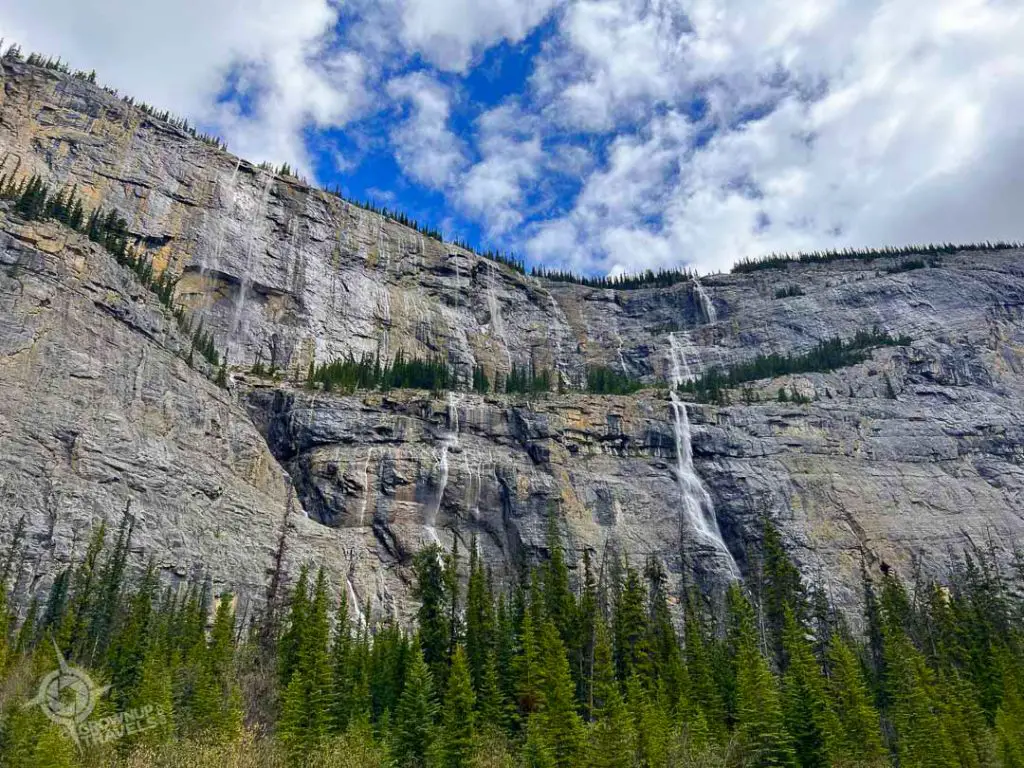
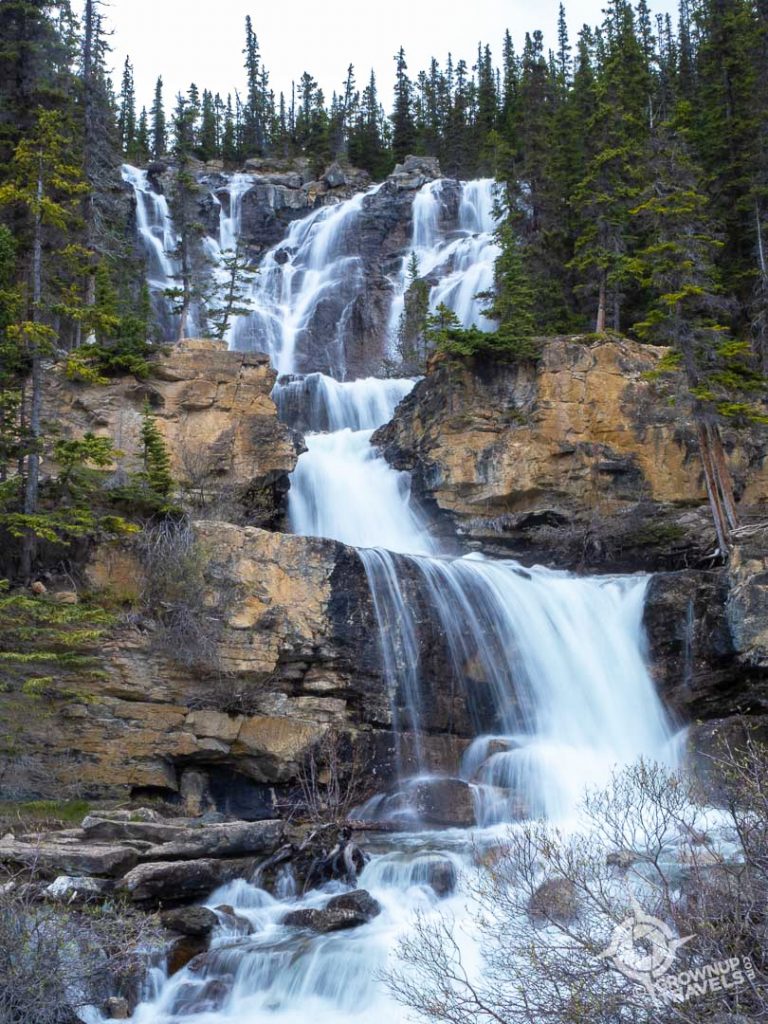
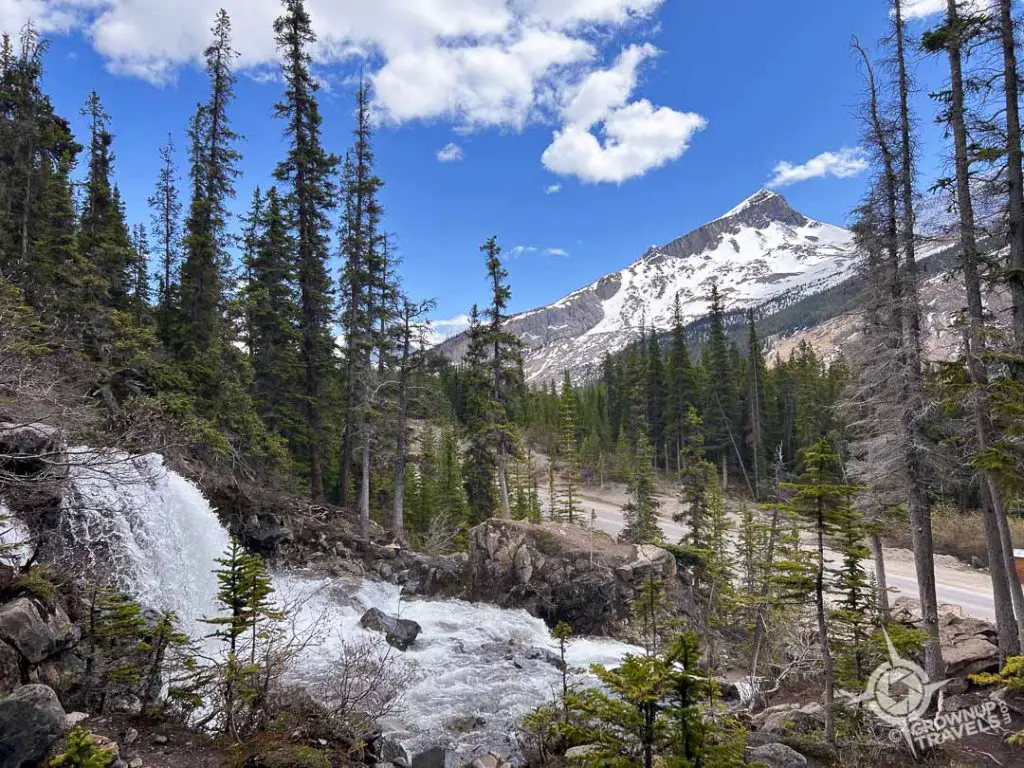
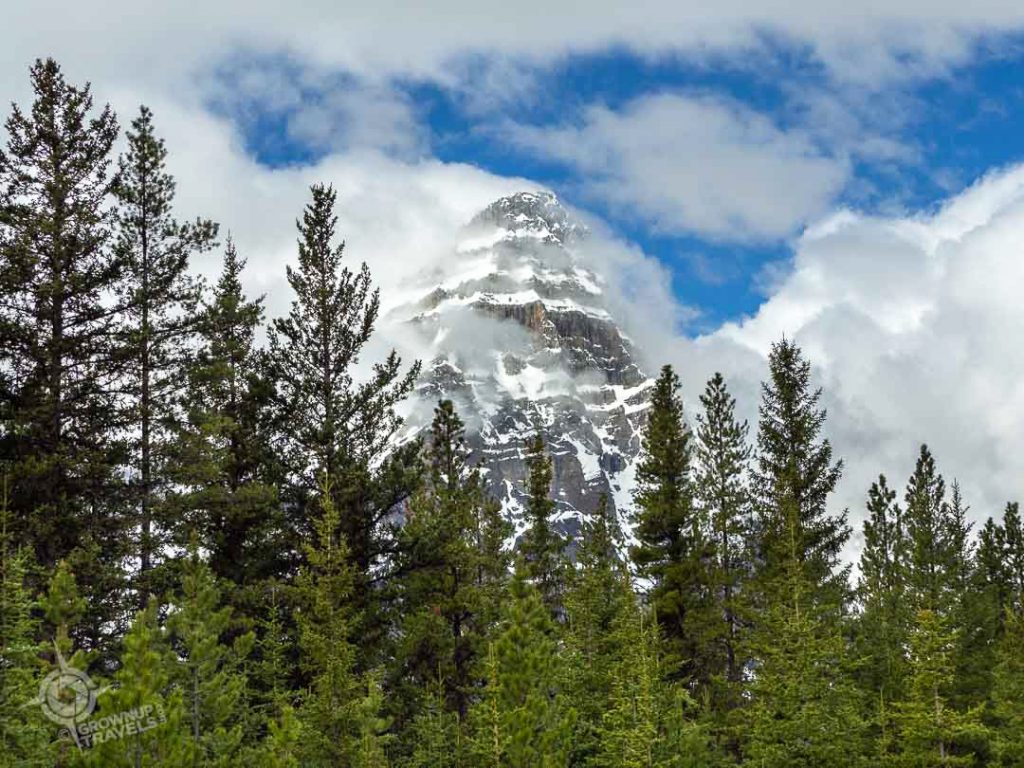
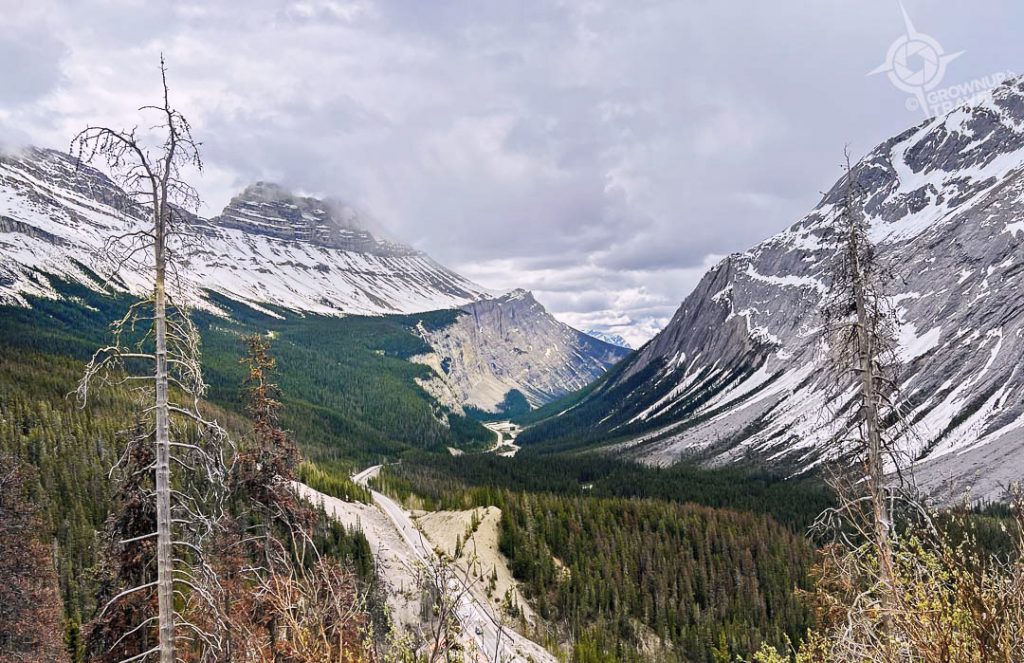
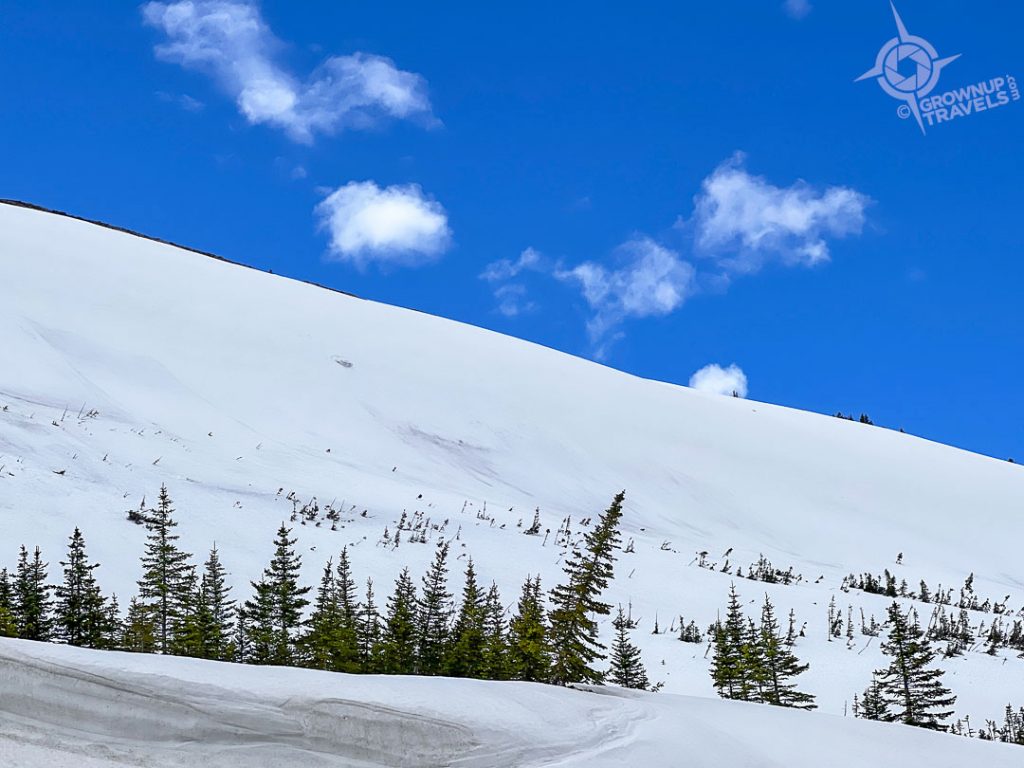
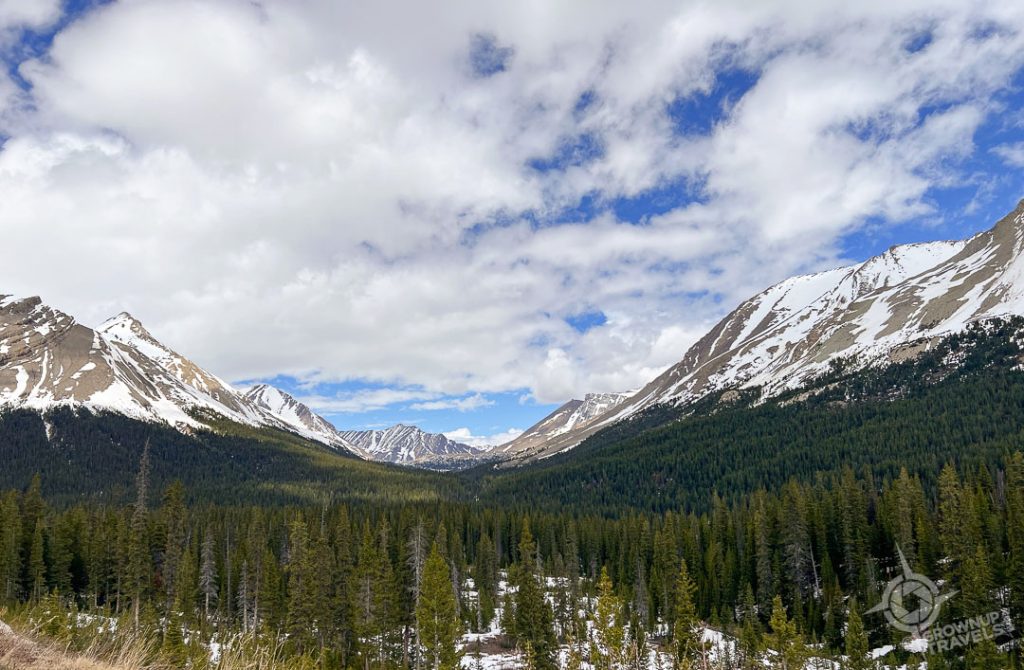
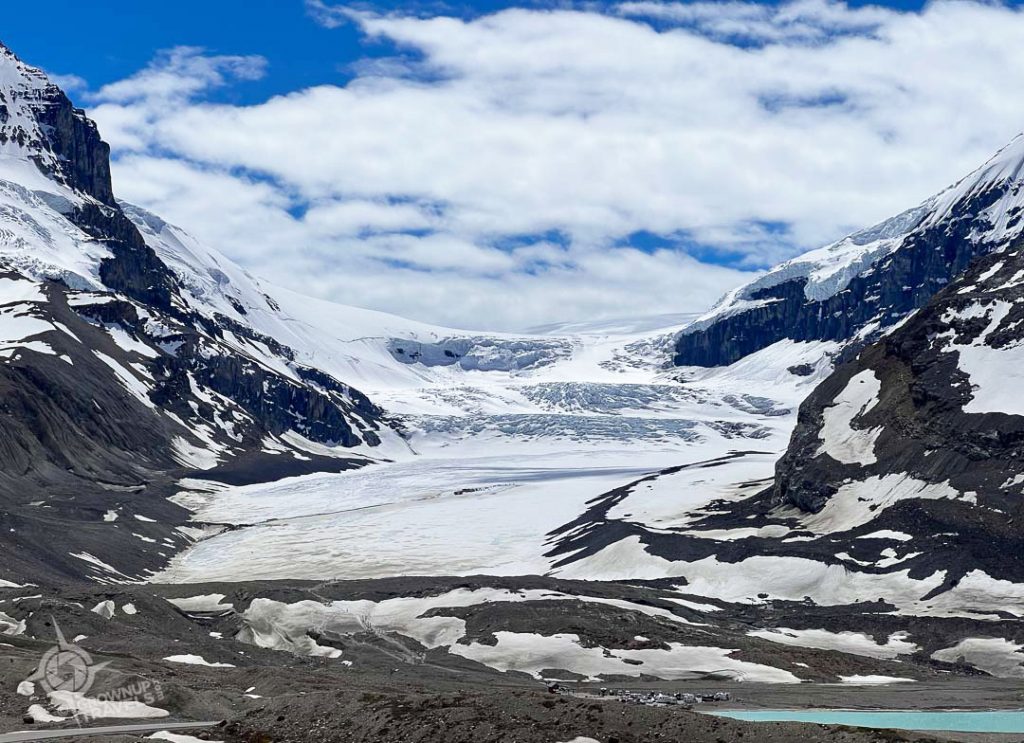
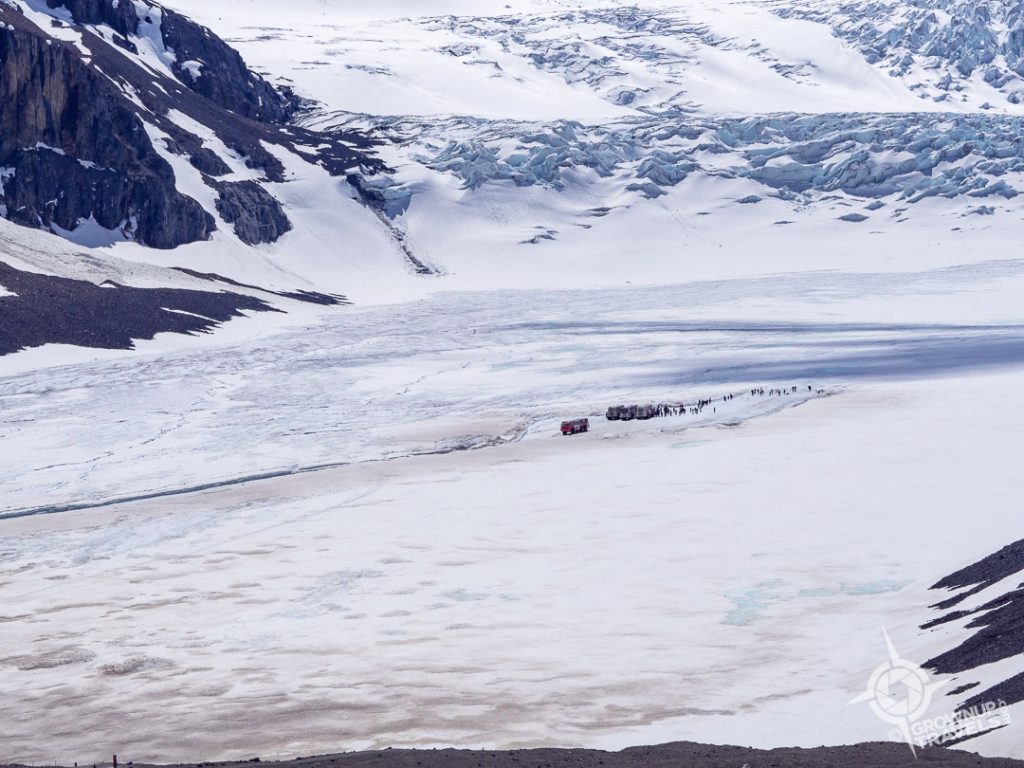
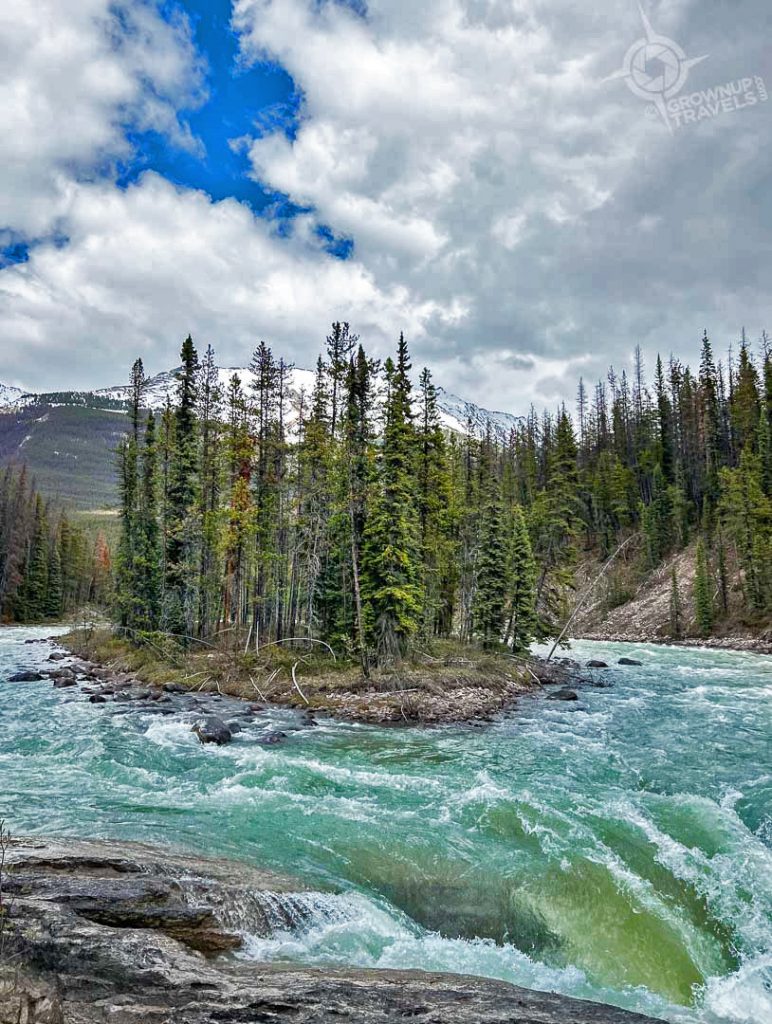
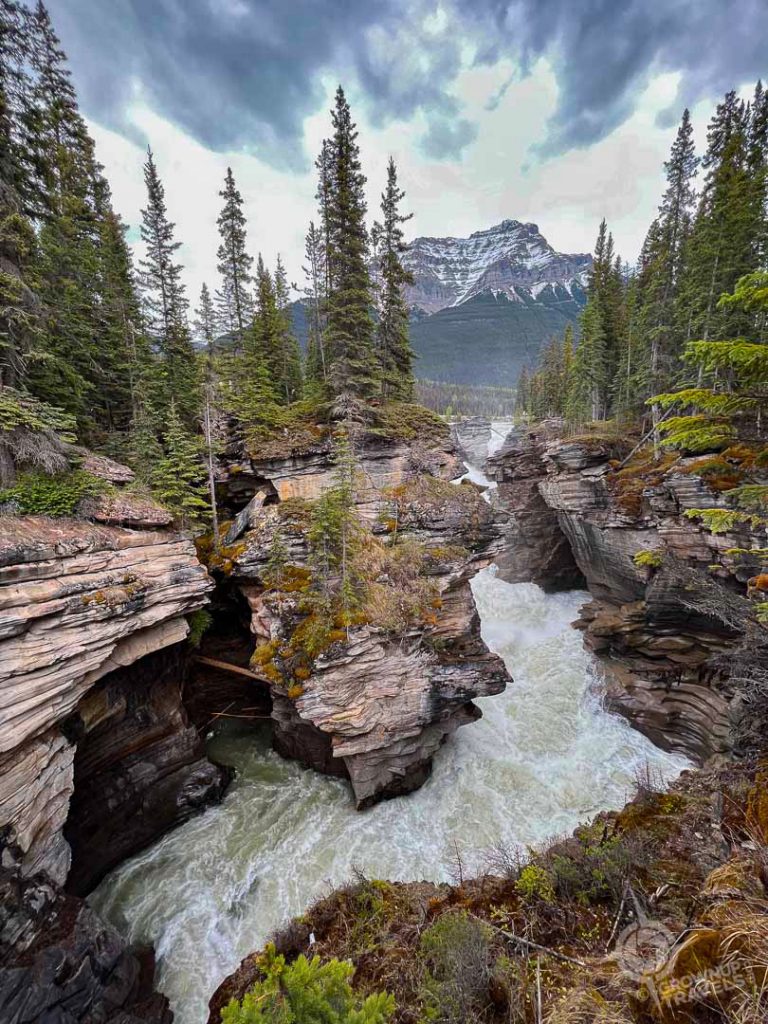
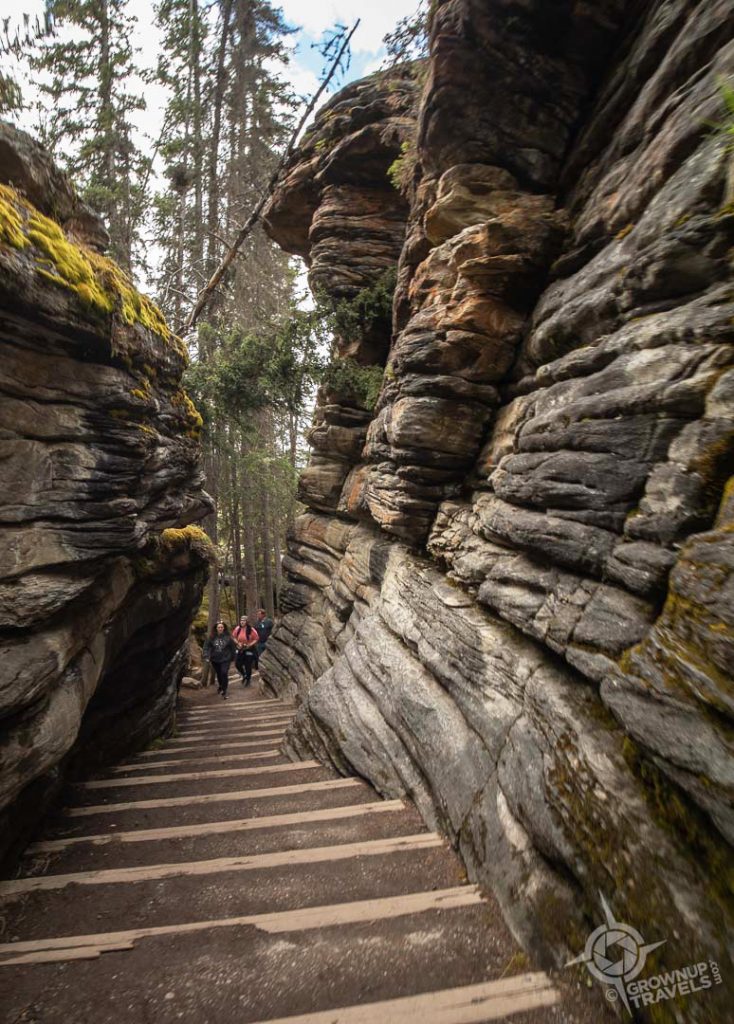
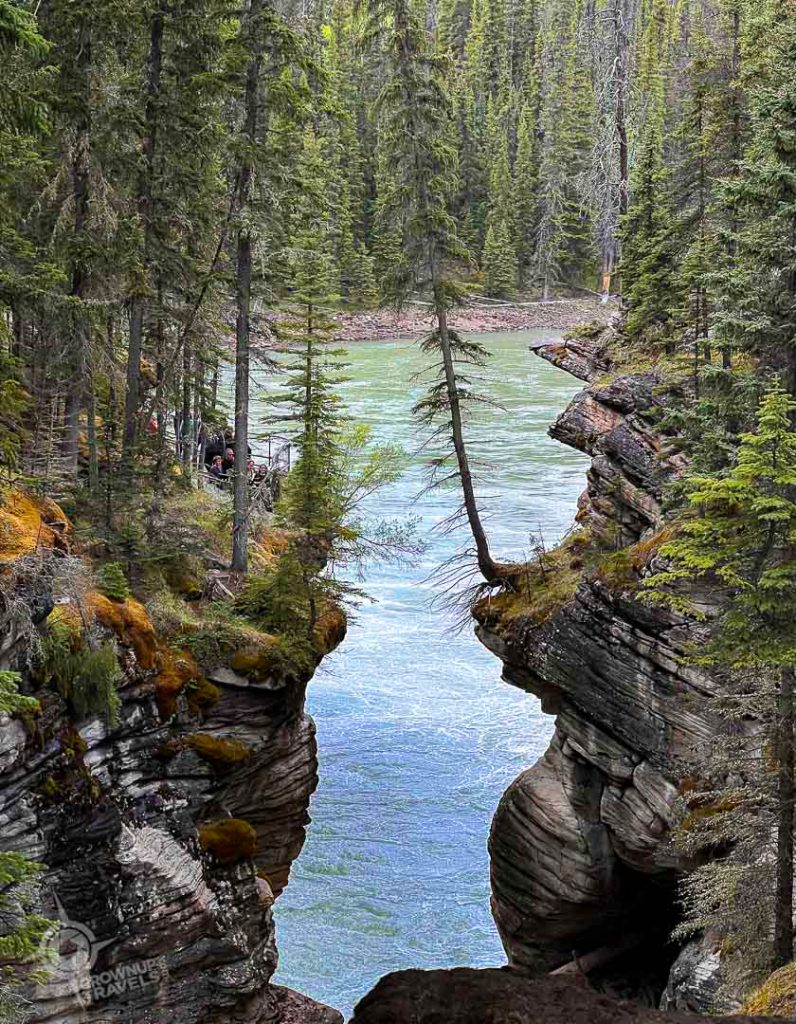
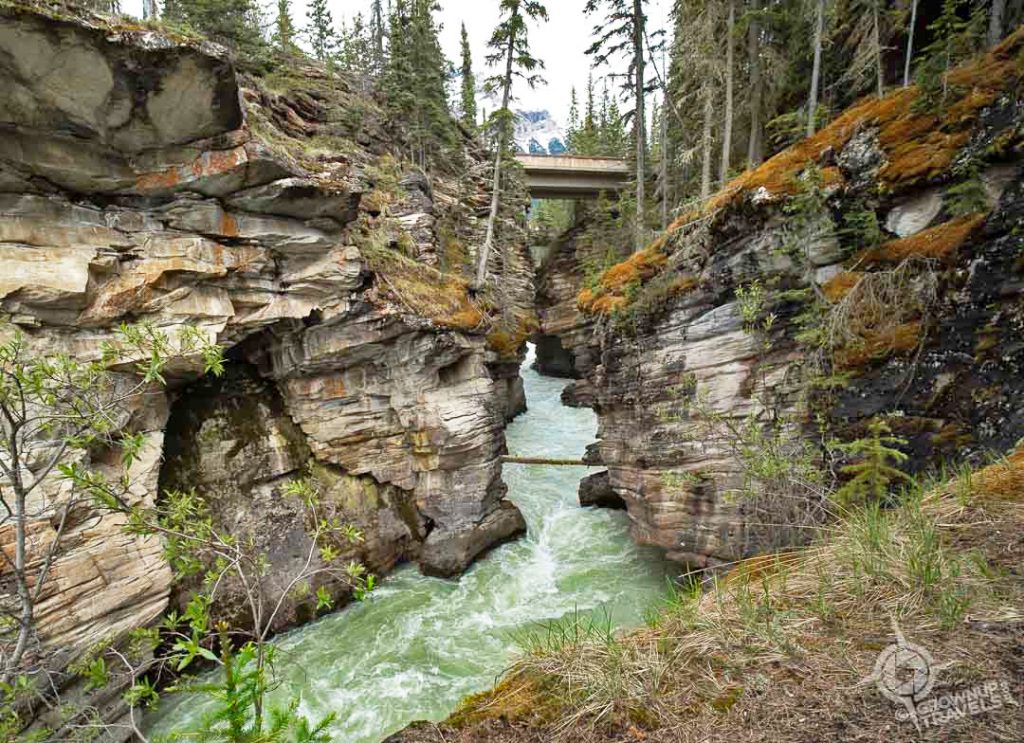
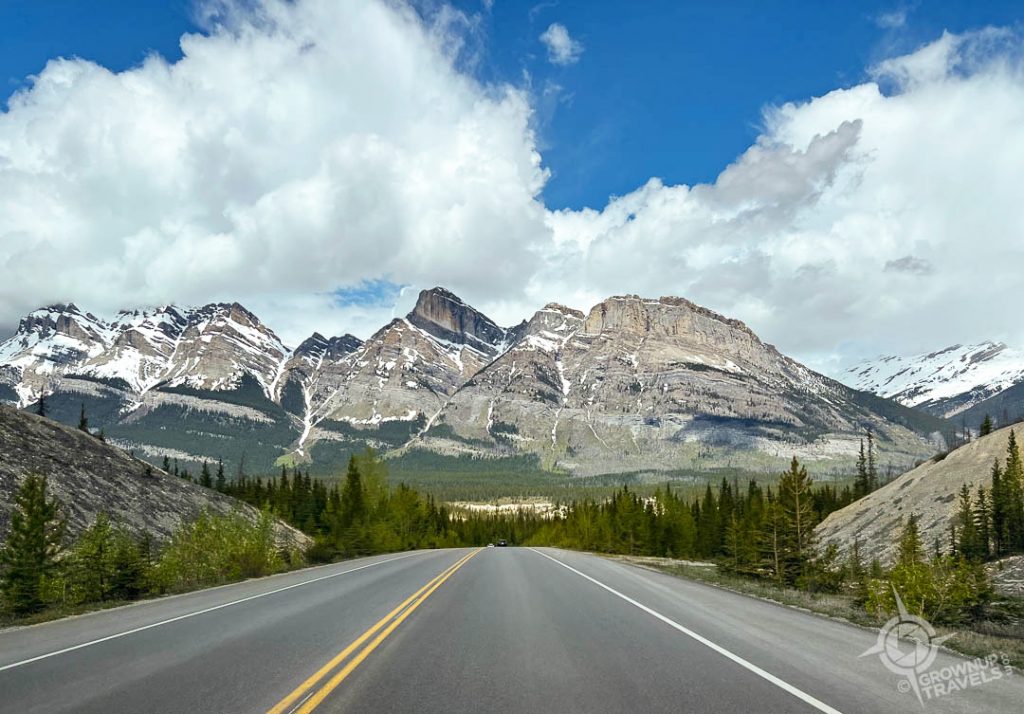
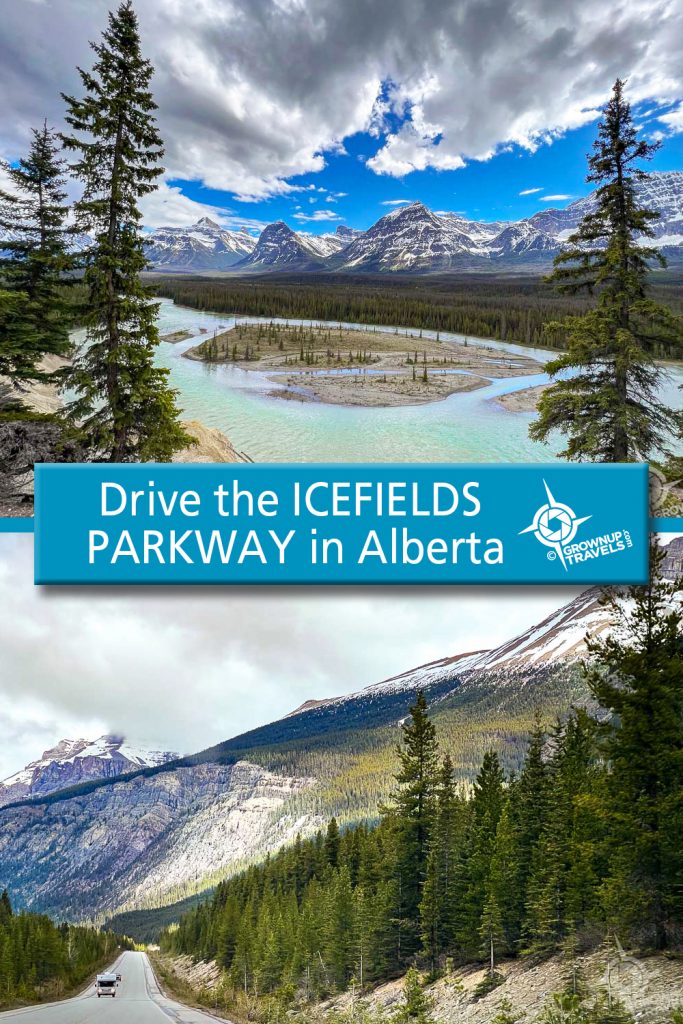

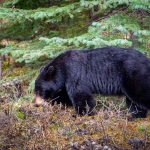


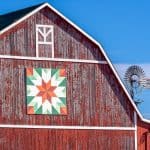





Just one, WOW!
Yes, that was our word exactly!